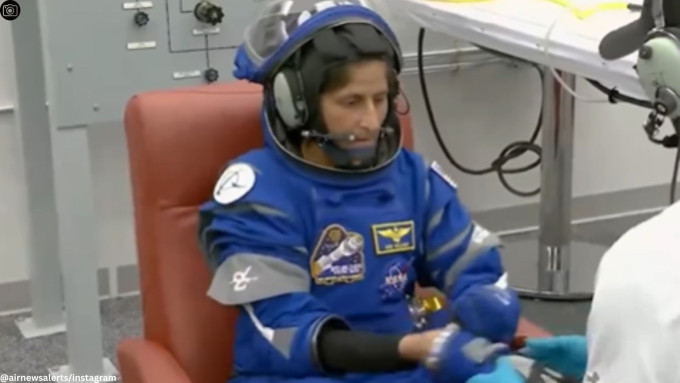Indian-origin astronaut Sunita Williams, stranded in space for over 50 days, may be at risk of potential vision problems
NASA astronaut Sunita Williams, currently stationed on the International Space Station (ISS) as part of the Boeing Crew Flight Test mission, recently underwent comprehensive eye examinations alongside her crew members. These scans focused on capturing detailed images of the cornea, lens, and optic nerve to better understand the potential effects of long-duration spaceflight on human vision.
Medical professionals on Earth closely monitored the procedure, ensuring the accurate collection of data. This information will contribute to ongoing research aimed at developing strategies to protect and treat vision issues that may arise during extended space missions, like this one that has gone on for 52 days now.

According to Dr Vineet Sehgal, Senior Consultant, Sharp Sight Eye Hospitals, these tests are crucial for several reasons. Primarily, they help monitor the astronauts’ vision and detect any changes or issues that could arise due to the unique environment of space.
“The microgravity conditions in space can have significant effects on the human body, including the eyes. Regular eye checkups ensure that any problems are identified and managed promptly, maintaining the astronauts’ health and their ability to perform mission-critical tasks effectively,” Dr Sehgal explained.
 Understanding and mitigating these eye health issues are vital for the safety and well-being of astronauts (File Photo)
Understanding and mitigating these eye health issues are vital for the safety and well-being of astronauts (File Photo)
What are the eye health issues the astronauts are facing because of their extended stay in space?
Astronauts who spend extended periods in space often face a range of eye health issues due to prolonged exposure to microgravity. One of the most common conditions is Spaceflight-Associated Neuro-ocular Syndrome (SANS). According to Dr Sehgal, this condition includes symptoms such as changes in vision, optic disc edema (swelling of the optic nerve), globe flattening (a change in the shape of the eye), and choroidal folds (wrinkling of the vascular layer behind the retina).
The primary cause of these issues is believed to be fluid shifts that occur in the body in a microgravity environment. On Earth, gravity pulls fluids down toward the lower parts of the body, Dr Sehgal said. In space, however, these fluids tend to move upwards towards the head, leading to increased pressure on the brain and eyes. This increased intracranial pressure can affect the shape and function of the eyes, leading to the symptoms associated with SANS.
Understanding and mitigating these eye health issues are vital for the safety and well-being of astronauts. As space missions become longer and more frequent, ensuring that astronauts can maintain good eye health throughout their missions is critical. These checkups and ongoing research are essential to developing effective countermeasures and treatments to protect the vision and overall health of astronauts during their time in space.
📣 For more lifestyle news, click here to join our WhatsApp Channel and also follow us on Instagram
Disclaimer: The copyright of this article belongs to the original author. Reposting this article is solely for the purpose of information dissemination and does not constitute any investment advice. If there is any infringement, please contact us immediately. We will make corrections or deletions as necessary. Thank you.

